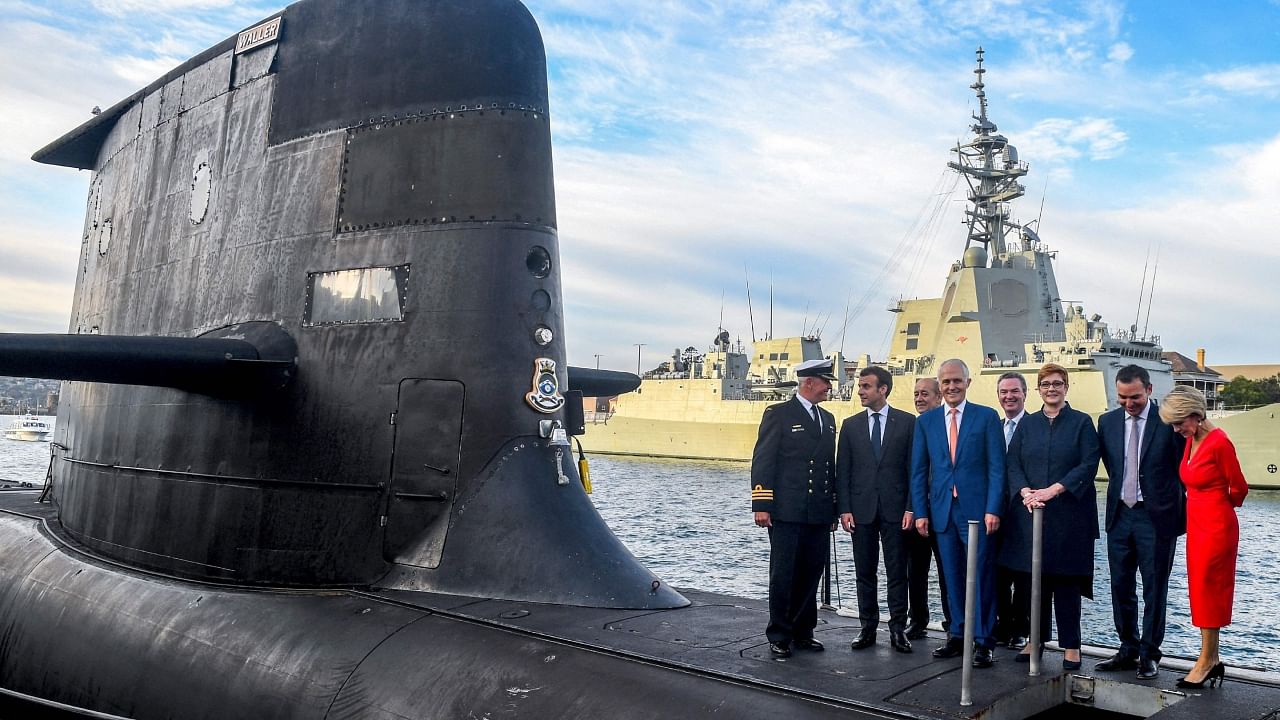
Australian nuclear submarines are key to defending the country's 36,000 kilometres of coastline and maintaining an edge against China, whose growing military presence means conflict can erupt without notice, defence officials and government advisers said.
The shift from Australia's diesel-electric fleet to nuclear-powered subs brings additional range, stealth and strike capability - crucial capabilities given Canberra's reliance on sea cargo for trade, and undersea cables for telecommunications, they said.
"This is the biggest step forward in our military capability that we've had since the end of the Second World War," Australian Defence Minister Richard Marles said on Friday. "This, more than anything that we can do, will allow us in a pretty difficult world to look after ourselves."
Reuters has reported Australia is expected to buy up to five US Virginia class submarines in the 2030s, before building a new British-designed submarine in South Australia under a partnership with both countries dubbed AUKUS. Sooner than that, around 2027, US nuclear submarines are expected to be deployed in Western Australia.
The three countries are expected to announce details of the plan on Monday in San Diego. The shift from six conventional submarines to a nuclear-powered fleet comes with a price tag estimated at A$100 billion-A$170 billion ($66 billion-$112 billion), Australia's biggest-ever defence project.
Nuclear submarines are a key area where the United States has an edge over China's navy, which is the world's largest, said Peter Dean, co-author of Australia's Defence Strategic Review, which was handed to the government last month and will be made public in April.
It is vital that Australia has the same capability to deter - or, if necessary, fight - China as it expands its nuclear submarine fleet and ranges deeper into Australia's northern waters, he said.
"The number one thing submarines do is hunt other submarines," he said. "We need to be able to track those submarines, and if it did come to a conflict with anyone, to respond appropriately. They are a really important part of our deterrence capability."
A US Defense Department report last year said the People's Liberation Army Navy (PLAN) had a fighting force of 340 ships and submarines, including 12 nuclear submarines - six equipped with ballistic missiles - and 44 conventionally powered submarines. The report added that China would build a guided missile submarine by the middle of this decade.
Sheer numbers can be overcome with superior technology, analysts said.
"Chinese submarines are of less advanced technology and noisier than they should be so more detectable," said Bates Gill, executive director for the Asia Society's Centre for China Analysis.
United States Studies Centre chief executive Michael Green, a former US National Security Council member who wrote a paper for the Pentagon seven years ago on undersea warfare, said he estimated then the US had a 15-year lead over China in that realm.
"The Chinese are developing carrier-killer ballistic missiles to target surface ships, aircraft carriers and destroyers. This undersea warfare advantage, this edge, is absolutely critical to deterring China against thinking it can use force against anyone in the region," he said.
Green says PLA officials told him a decade ago that Beijing sought to control the waters around the Pacific's "first island chain" of Taiwan, Japan and the Philippines - which all have treaties with the United States - to create a buffer.
They also hoped to push US forces from the "second island chain" spanning the US territory of Guam to the Pacific islands, which count Australia as a traditional aid and security partner.
China's failed effort last year to strike a 10-nation security and trade pact in the Pacific islands renewed concern about Beijing's naval ambitions, he said.
"They want to take the fight to our neighbourhoods so that we can't concentrate our forces to deal with a contingency in the first island chain," he said, referring to an attack on Taiwan.
The US has long wanted to base its nuclear submarines in Australia, and if that is the near-term solution under AUKUS, it is a significant shift, Gill said.
AUKUS will also see the joint development of long-range missile systems, pre-positioning of material and a larger US military footprint in Australia, he said.
"The public mood has dramatically changed towards China," he said, pointing to polling by the Lowy Institute think tank showing Australians see China as a threat. Such moves nonetheless remain politically sensitive, despite bipartisan support from the two major parties, and would face some community opposition, he added.
Also Read | EAM Jaishankar calls on Australian PM Albanese
Prime Minister Anthony Albanese has said Australia will retain sovereign decision-making as it integrates with AUKUS allies - from the workers who will build the submarines to training programmes.
He declined to comment on costs on Friday but said Australia would "make sure that we invest more in our defence".
Dean says the Defence Strategic Review has set out a plan to handle a conflict that begins without warning - preparations that range from ammunition and fuel logistics to workforce requirements and base locations.
China's diplomats have said AUKUS violates a Pacific nuclear-free treaty, and the country has told the International Atomic Energy Association the pact is an act of nuclear proliferation, although IAEA has said marine nuclear propulsion is allowed if monitored.
Beijing says its military expansion in the region is for defensive purposes.